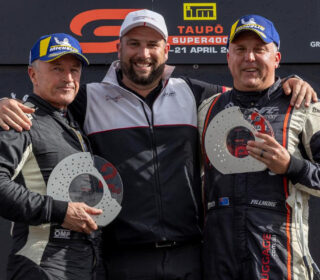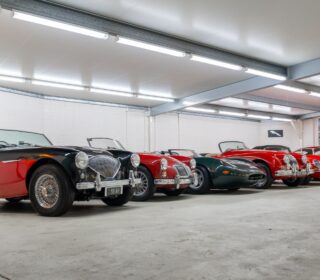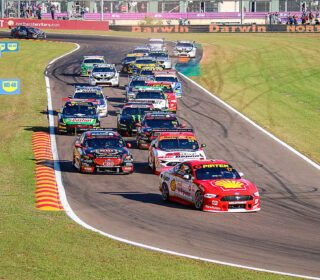0.0031 SECONDS TO WIN
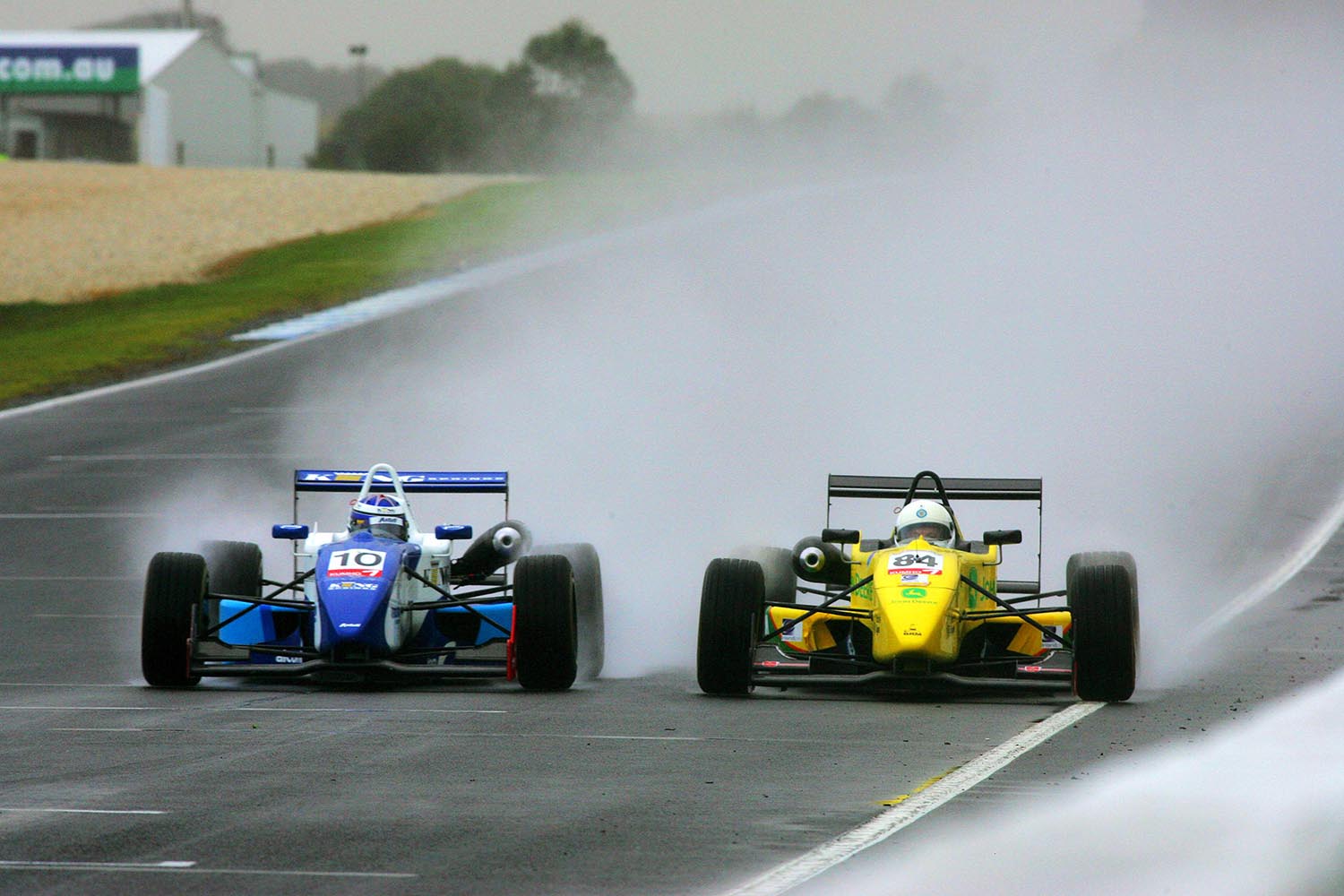
THIS IS the story of the closest finish in the long and storied history of the Australian Drivers Championship – a Phillip Island epic in the torrential rain that stands as one of the absolute great drives.
WORDS: Richard Craill IMAGES: Dirk Klynsmith
AS THE AUSTRALIAN Formula 3 Championship assembled for their third round of the 2006 season things were beginning to look interesting.
The series had been floored by the arrival of British driver Ben Clucas back at Wakefield in April, the unknown coming into the country and demolishing the opposition despite never having seen the track and with little time to acquaint himself with the Team BRM Dallara he would drive all season.
But at Symmons Plains a week later the field had got their stuff together and had started putting up a fight.
Now in his second season, Victorian Michael Trimble had won in Tasmania, stopping Clucas’ run of three victories on the trot and showing that the championship wouldn’t be a total rout from start to finish.
But Phillip Island is always unique – It’s one of those mystical places where prior form can often mean nothing and where the unexpected can emerge. Boy, did it ever this day.
Qualifying was close, Clucas’ rivals hard on his tail but Sunday was another story thanks to the fact that it rained just before the start of race one.
In the best of conditions, Formula 3 cars are difficult to launch. In the rain, even more so. Sometimes you can hit the right amount of throttle percentage and clutch bite to minimise wheelspin – as Michael Trimble did this particular day – and sometimes you can’t, as Ben Clucas quickly found out.
Trimble made a stunning start in the rain and fired into the lead, with Macrow also jumping ahead of Clucas on the run down towards the flat-out turn one; but the fact everyone was racing was a bonus. The sudden rain shower before the start left teams frantically rushing on the grid to change their cars from full-hard, dry weather setups to the softer, more compliant settings you need in the wet.
So there they were, Trimble leading Macrow and Clucas with Gilmour’s traditionally good start placing him just in behind the leading trio.
The early signs of who had what underneath them were apparent as the field exited the long, sweeping, 180-degree turn two – the Southern Loop – which is where Clucas shot past Macrow on the exit. By the time they got to Honda, 600 meters down the road, Clucas was five car lengths in front of the Victorian.
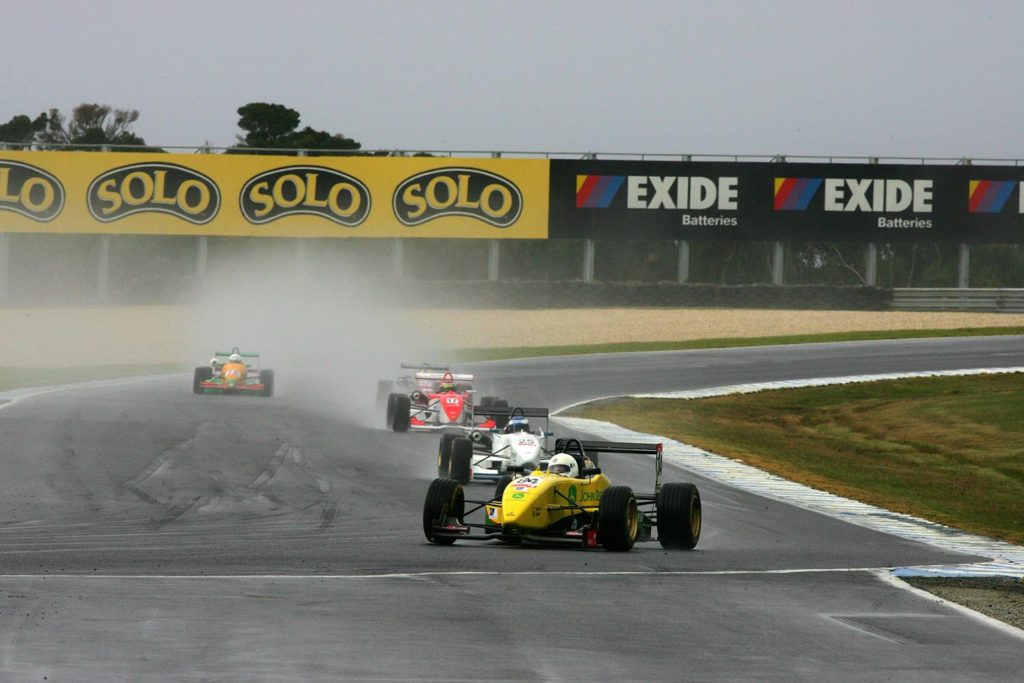
By the time Clucas entered turn eleven, he was in front of the race itself; it seemed in those conditions he and his car were in a different league and if things went to plan from there, that probably would have been the end of the story and it would have been a Clucas win by miles.
However, that wasn’t the case as the race was turned on its head by a series almost comedic events that tilted the race back onto a level playing field.
Running particularly well in the oldest car on the grid was a gentleman by the name of Brian Sampson, the winner, with Peter Brock, of the 1975 James Hardie Bathurst 1000. A legend of the sport, ‘Sambo’ had brought his ancient Dallara 391 out to Phillip Island for a play and it seemed like a good decision: he was flying!
Sampson’s old-school flat-bottomed car generated plenty of downforce for the cost of little drag and as such was ideally suited to Phillip Island and he was using it to his advantage, qualifying eighth out of fourteen.
However on lap one, trying very hard, Phillip Island bit and spat him off into the gravel at Siberia and for that he was unhappy. VERY unhappy. Sampson threw his wheel from the car, jumped out and stomped off through the gravel, arms to each side like a five-year-old in a huff, steam all but pouring out through his visor.
And then, he stopped, turned around, picked up some of the offending sand trap and pitched it at the car. Take that!
Sambo bunkers itHow we feel when it’s a Sunday but there’s no racing on.. ’75 Bathurst 1000 winner Brian Sampson bunkered his Formula 3 car in the rain at Phillip Island in 2006.. and HE WAS NOT HAPPY ABOUT IT! Watch to the end.. www.theracetorque.com
Posted by The Race Torque on Saturday, May 2, 2020
Meanwhile, the Safety car had been called out to recover Sampson’s car so the race was neutralised, but the drama would still flow: As the race control radio crackled into life the following was announced; “Drive Through penalty, Car #84, start-line infringement.”
Clucas had been done for rolling slightly prior to the start and was sentenced to the cruellest of all the ‘penalty doesn’t fit the crime’ punishments – a drive through. And, of course, he could not serve it until the race went green again.
After three laps of Safety Car, the race went back to green at the beginning of lap five and Clucas flew; With a three lap window in which to serve his penalty, his first flyer was three seconds quicker than the second-placed Trimble.
At the end of lap six Clucas pitted and trundled through pit lane at 60km/hr as Trimble, Macrow and Tander (who had passed Gilmour at the end of lap five) all steamed past. When he emerged from pit lane, the former leader was twenty-six seconds behind the leader but, at least, still had Gilmour in his gun sights.
Trimble banged in his quickest lap of the race on lap seven, a 1:45.25 enough to extend his lead over Macrow by a further 1.5 seconds.
Clucas, meanwhile, showed indications of what was to come. As well as passing Chris Gilmour on his out lap from serving his penalty, he also punched out a 1m46.9 second laptime – despite crossing the control line at 60km/hr..
Lap eight proved the point: Trimble came through first and logged a 45.41, just tenths slower than his previous best. Four seconds down the road was Macrow (47.17) with his older 2001-generation Dallara battling. Next then came the flying Clucas, now third and having driven around the outside of Tander on the run past the Hayshead at warp speed the lap before.
He banged in a staggering 1:41.36, a full five seconds quicker than anyone.
This, we thought, was going to be interesting, but his margin to the leading pair was still more than twenty seconds six of the race’s 14-lap duration remaining.
Clucas went quicker again the next lap, his 1:40.29 the fastest of the race by an incredible margin.
This was turning out to be a handicap race; Clucas four seconds per lap faster than anyone but still 20 seconds behind the leader with four laps remaining. Would he catch him by the final few corners? It looked like it could be a close-run thing.
Then Clucas, as if by divine intervention, earned some karma for his start-line penalty: On lap ten of fourteen, Ricky Occhipinti looped his Dallara on the exit of MG and was whacked solidly by Maher Algadri, bringing out the second safety car of the morning.
The recovery took three laps, meaning just one tour of 4,460 meters would remain for this race to play out.
Through all this, fortune had not forgotten to smile on Michael Trimble. Just as the yellow flag was waved and the race slowed, he had placed one lap on the Scud Racing Dallara of Bill Maddocks.
What it meant was there would be one car between the leader and those chasing him. If he could just get a good jump when they went back to green and catch Maddocks napping, and if Macrow could delay the Brit for just a corner or two, Trimble might just have enough of a margin to hold on from the inevitable Clucas charge.
That’s exactly what happened: The moment the Safety Car veered left into the long pit access road Trimble was gone, disappearing up the road in a cloud of his own spray to pull two full seconds on the field even before they got to the control line.
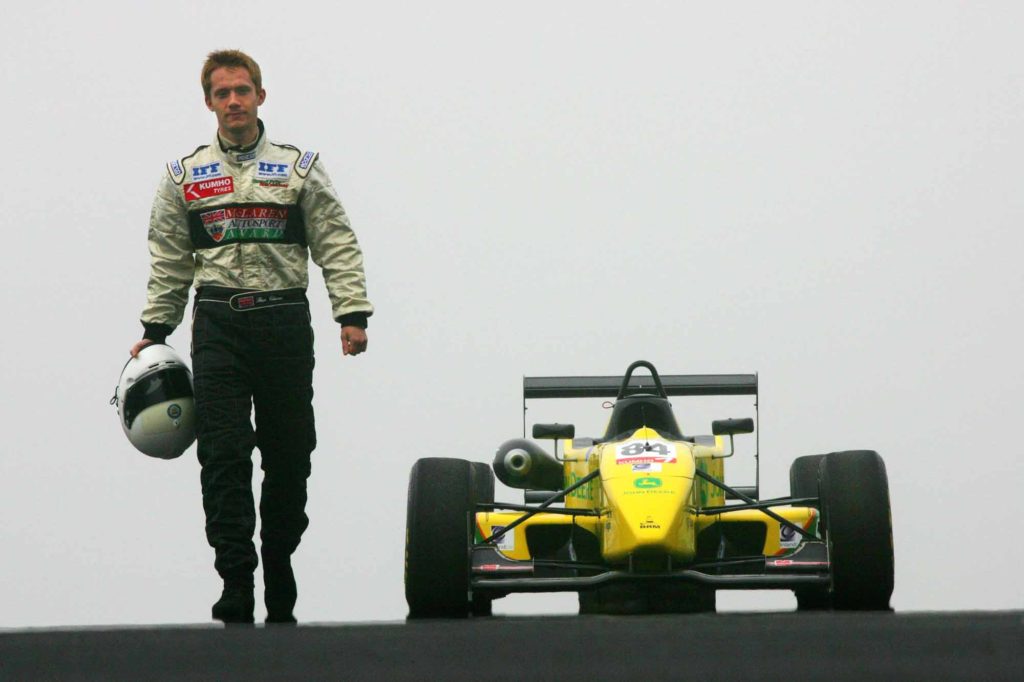
Predictably, Macrow was also unwilling to gift his British rival another position and was firm in emphasising his own bit of the race track however, on the exit of two, Clucas’ incredible power down was just too good as he went down the inside through the kink and into second. Two thirds of a lap remained.
Trimble had about three seconds up his sleeve at Honda and was ragging his Dallara as hard as he could drive, it and to his eternal credit was hitting every marker beautifully despite his car bordering on being completely undrivable; in the rush to get the car tuned for the rain, the team had gone full-soft on shocks and springs but left the dry-weather bump stops in place, rendering the rear suspension useless with just a few millimetres of travel. He may as well have been driving on slicks, for all the good it was doing him.
Behind him, Clucas closed, now visibly closer on the run towards Siberia. The gap was now five or six car lengths, at best.
The pair flew over Lukey heights and Clucas closed again but at this point, with three corners to go, it looked to be Trimble’s race. It was just too big a gap to close, surely, with less than a kilometre to run.
Trimble positioned his car perfectly in the middle of the road exiting the first left hander, accelerating up through the gears before the final corner and the run onto Gardner Straight – but there was nothing he could do about the way Clucas’ Team BRM Dallara got out of the corner: he had traction as if he was racing on a dry track.
Through the final turn he shoved his nose up the inside and it would be a drag race on the main straight.
350 meters to go.
Trimble looked across into his left-hand mirror but his spatial awareness and hearing would have already told him there was another Dallara flying along his port-side sidepod. Options? There was only one left: slowly work his rival across towards the wall, and hope that Clucas would be the first to blink.
As they accelerated through fifth gear the two cars edged closer to the pit wall, individual rooster tails of spray merging to become one as the two Dallara’s raced to the waiting flag. At the closest point, exactly the width of one Kumho Front control tyre split the two cars as they raced side-by-side.
By now, Clucas had two wheels over the painted white line on the inside of the circuit.
As they got to the grid markers on the third and then second rows of the grid, he had the left hand wheels of his Dallara completely over the supposed inside boundary of the Phillip Island Grand Prix circuit, into the stones, marbles and muck of dirty water and debris that the running water had pushed alongside the wall as collectively the circuit held its breath.
This was either going to be a superb finish or an aircraft accident of a shunt.
They crossed the line absolutely side by side and for a moment it looked as if Michael Trimble had held on. The timing system failed completely, frozen for several seconds as it was unable to separate the two cars. The commentators sat stunned.. theorising that perhaps, just perhaps, Trimble had held on – if only because no one around believed that Clucas could have actually won the thing.
Down in pit lane the Astuti and BRM crews stood staring at each, other, not knowing who had won.
Finally, after what seemed like an eternity but in reality was but a few seconds, the timing monitor sorted itself out.
The final results showed Michael Trimble had completed the race in 30:15.0992. Clucas? 30:15.0961.
Despite giving away four seconds on the opening lap, twenty-six in a drive through penalty and having to pass Michael Trimble and Tim Macrow twice in a 14-lap race, the Brit had won by three one-thousandths of a second, or 0.0031.
Less than the 30-centimetre length of a front wing endplate split the pair as they rushed to the closest finish in Gold Star history.



